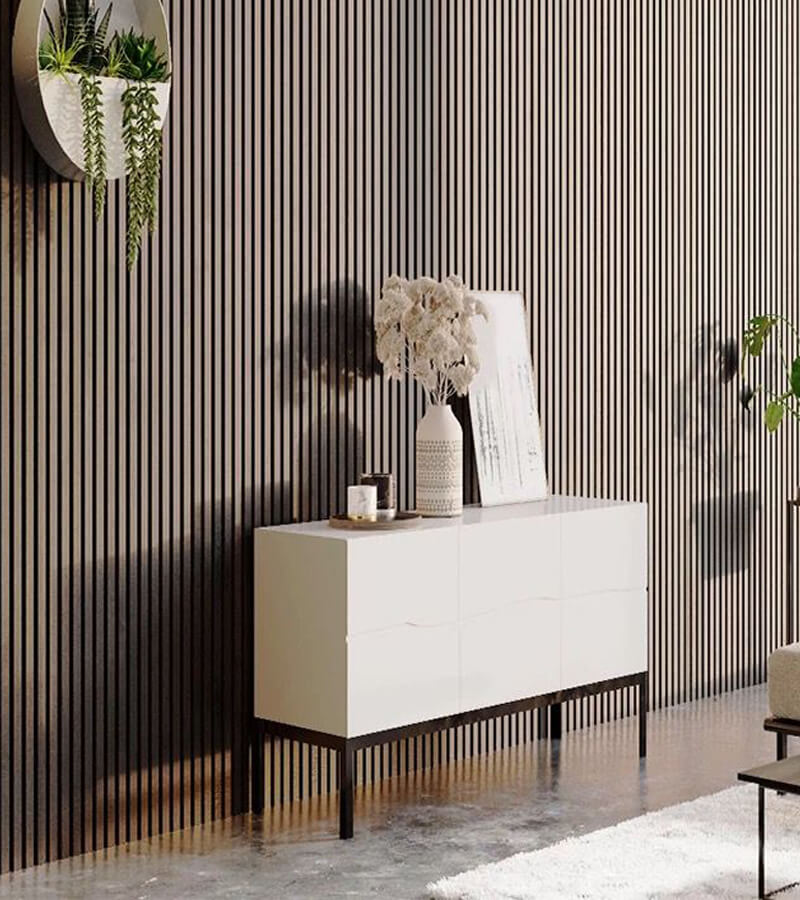Plastic wall paneling is a versatile and practical solution for enhancing the look and functionality of any interior space. Whether you’re renovating your home or upgrading a commercial property, plastic wall paneling offers a wide range of benefits, making it a popular choice among DIY enthusiasts and professional contractors alike. In this comprehensive guide, we’ll explore everything you need to know about plastic wall paneling, including its advantages, types, installation tips, and maintenance requirements.
What is Plastic Wall Paneling?
Plastic wall paneling is a type of interior wall covering made from durable synthetic materials such as PVC (polyvinyl chloride) or composite plastics. These panels are designed to mimic the appearance of traditional materials like wood, stone, or tile, providing a stylish and affordable alternative for homeowners and designers.
Key Features of Plastic Wall Paneling:
- Lightweight: Easy to handle and transport.
- Durable: Resistant to water, stains, and scratches.
- Cost-Effective: Affordable compared to traditional wall finishes.
- Low Maintenance: Requires minimal cleaning and upkeep.
Visual Description:
Imagine sleek panels with a glossy finish that can resemble natural wood grains or textured stones, seamlessly fitted onto your walls for a modern yet practical look.
Advantages of Plastic Wall Paneling
Plastic wall paneling is a game-changer for home improvement projects. Here’s why:
1. Waterproof and Moisture-Resistant
Unlike traditional wood paneling, plastic panels are highly resistant to water, making them ideal for areas prone to moisture, such as bathrooms, kitchens, and basements.
2. Easy Installation
Plastic wall paneling often comes with interlocking edges, allowing for a straightforward installation process that doesn’t require professional expertise.
3. Versatile Design Options
From faux wood to sleek modern finishes, plastic wall paneling offers a variety of styles and colors to suit any decor theme.
4. Eco-Friendly Options
Many manufacturers offer panels made from recycled materials, making plastic wall paneling an environmentally conscious choice.
Pro Tip: For a stunning visual effect, use plastic panels in contrasting colors to create an accent wall that draws attention.
Types of Plastic Wall Paneling
When choosing plastic wall paneling, understanding the different types available can help you make the best decision for your space. Here are some popular options:
1. PVC Wall Panels
PVC panels are the most common type of plastic wall paneling, known for their lightweight and moisture-resistant properties.
- Best For: Bathrooms, kitchens, and laundry rooms.
- Designs Available: Faux wood, marble, and tile patterns.
2. 3D Plastic Panels
These panels add depth and dimension to your walls with unique, textured designs.
- Best For: Feature walls and modern interiors.
- Designs Available: Geometric patterns, wave textures, and artistic shapes.
3. Composite Plastic Panels
Made from a combination of plastic and other materials, these panels offer enhanced durability and insulation.
- Best For: High-traffic areas like hallways or commercial spaces.
- Designs Available: Matte and glossy finishes.
Types of Plastic Wall Paneling
| Type | Durability | Water Resistance | Common Use Areas | Aesthetic Variety |
|---|---|---|---|---|
| PVC Wall Panels | High | Excellent | Bathrooms, Kitchens | Moderate |
| 3D Plastic Panels | Medium | Good | Living Rooms, Offices | High |
| Composite Panels | Very High | Excellent | Commercial Spaces | High |
How to Install Plastic Wall Paneling
Installing plastic wall paneling is a simple process that even beginners can tackle. Follow these steps to get started:
Step 1: Measure and Prepare the Wall
- Use a tape measure to calculate the dimensions of your wall.
- Clean the surface to remove dust and debris for better adhesion.
Step 2: Cut the Panels
- Use a utility knife or saw to cut the panels to the required size.
- Wear safety goggles for protection during cutting.
Step 3: Attach the Panels
- Apply adhesive to the back of each panel or use screws for a more secure fit.
- Start from one corner and work your way across the wall.
Step 4: Seal the Edges
- Use silicone sealant to fill any gaps between panels for a polished look.
- Wipe off excess sealant for a clean finish.
Pro Tip: For curved walls, opt for flexible plastic panels that can adapt to the shape without cracking.
Maintenance and Care for Plastic Wall Paneling
One of the biggest advantages of plastic wall paneling is its low-maintenance nature. Here’s how to keep your panels looking new:
- Regular Cleaning: Wipe the panels with a damp cloth and mild detergent to remove dirt and grime.
- Avoid Harsh Chemicals: Use non-abrasive cleaners to prevent scratches or discoloration.
- Inspect for Damage: Periodically check for loose edges or cracks and repair them promptly.
Maintenance Checklist:
- Dust panels weekly.
- Clean spills immediately to prevent stains.
- Reapply sealant annually for waterproofing.
Frequently Asked Questions
1. Can plastic wall paneling be painted?
Yes, plastic wall panels can be painted with the right type of paint, such as acrylic or latex, but it’s essential to prepare the surface by sanding and priming it first.
2. Is plastic wall paneling suitable for outdoor use?
Most plastic panels are designed for indoor use. However, some composite options may be suitable for covered outdoor spaces.
3. How long does plastic wall paneling last?
With proper care, plastic wall paneling can last 10–20 years, depending on the type and quality.
4. Are plastic panels eco-friendly?
Many manufacturers use recycled materials, making them an environmentally friendly option. Check for eco-certified products.
5. Can I install plastic wall paneling over tiles?
Yes, plastic wall paneling can be installed over existing tiles as long as the surface is clean and level.
Plastic wall paneling is a practical and stylish solution for transforming your walls. Its durability, versatility, and low maintenance make it an excellent choice for both residential and commercial spaces. By following the tips and insights shared in this guide, you can confidently choose and install the perfect panels to enhance your interior design.








